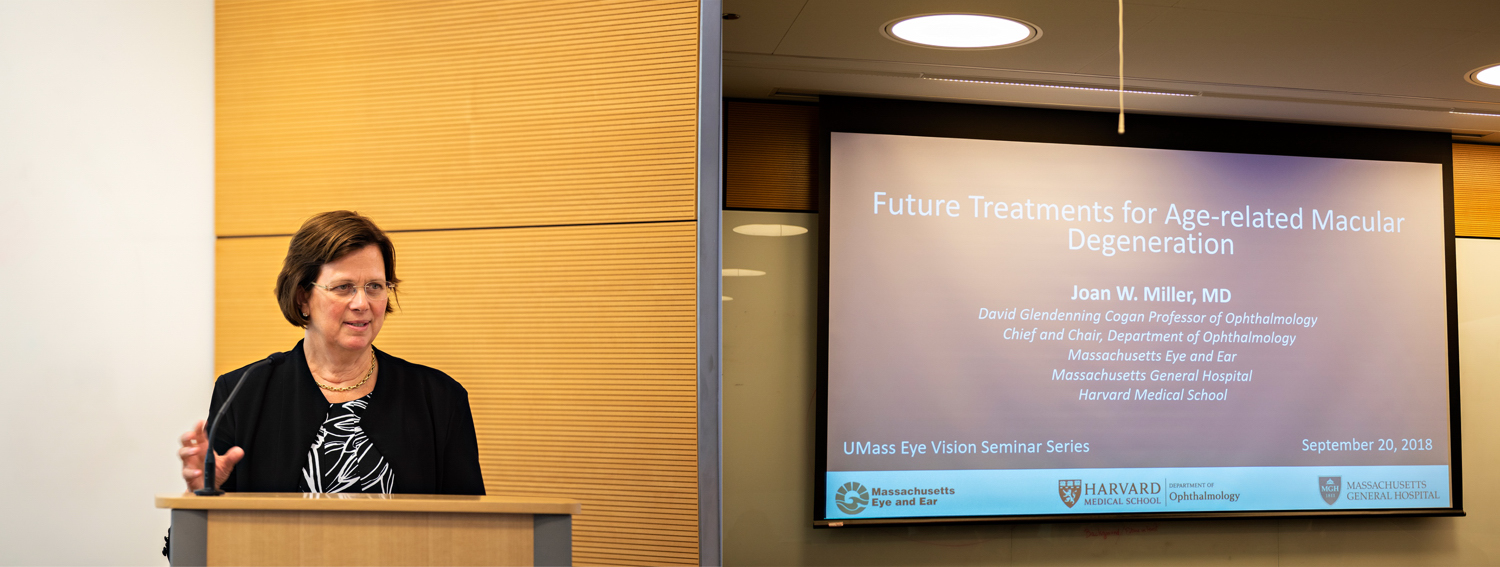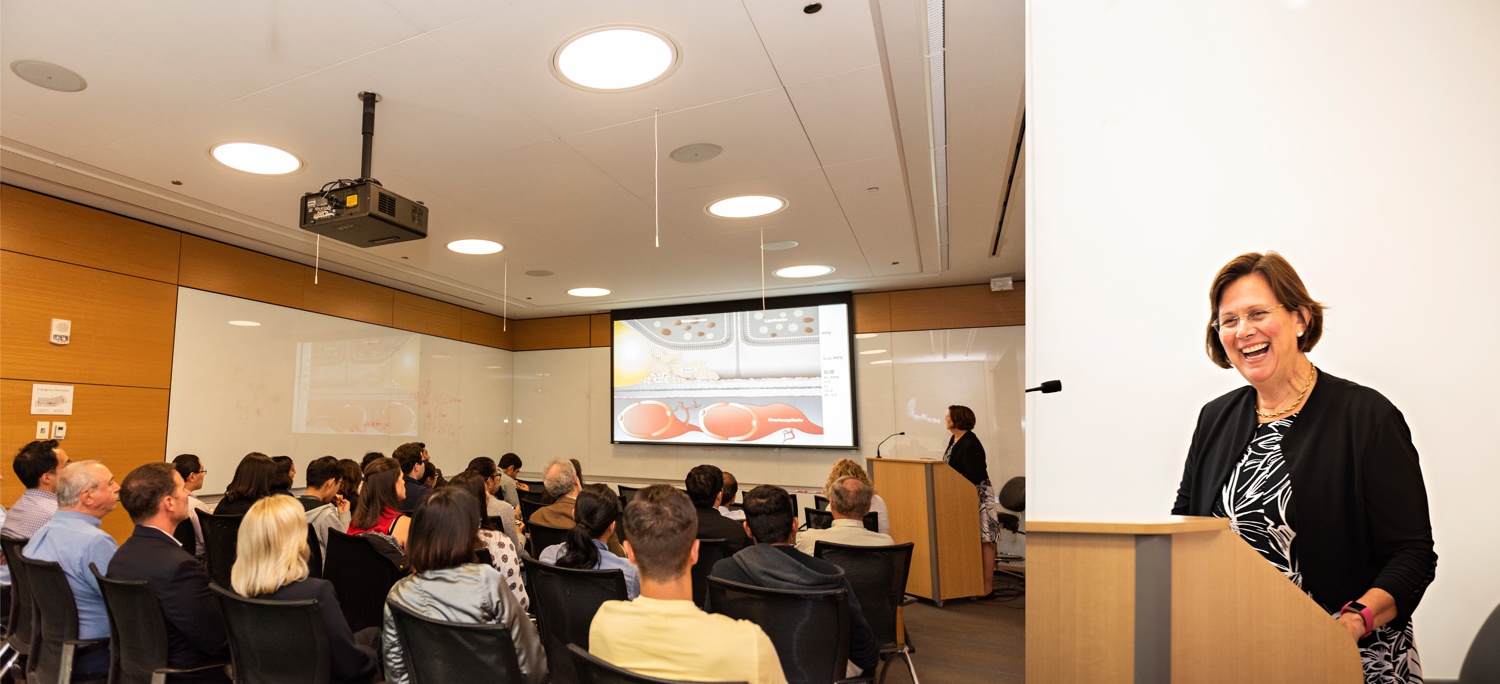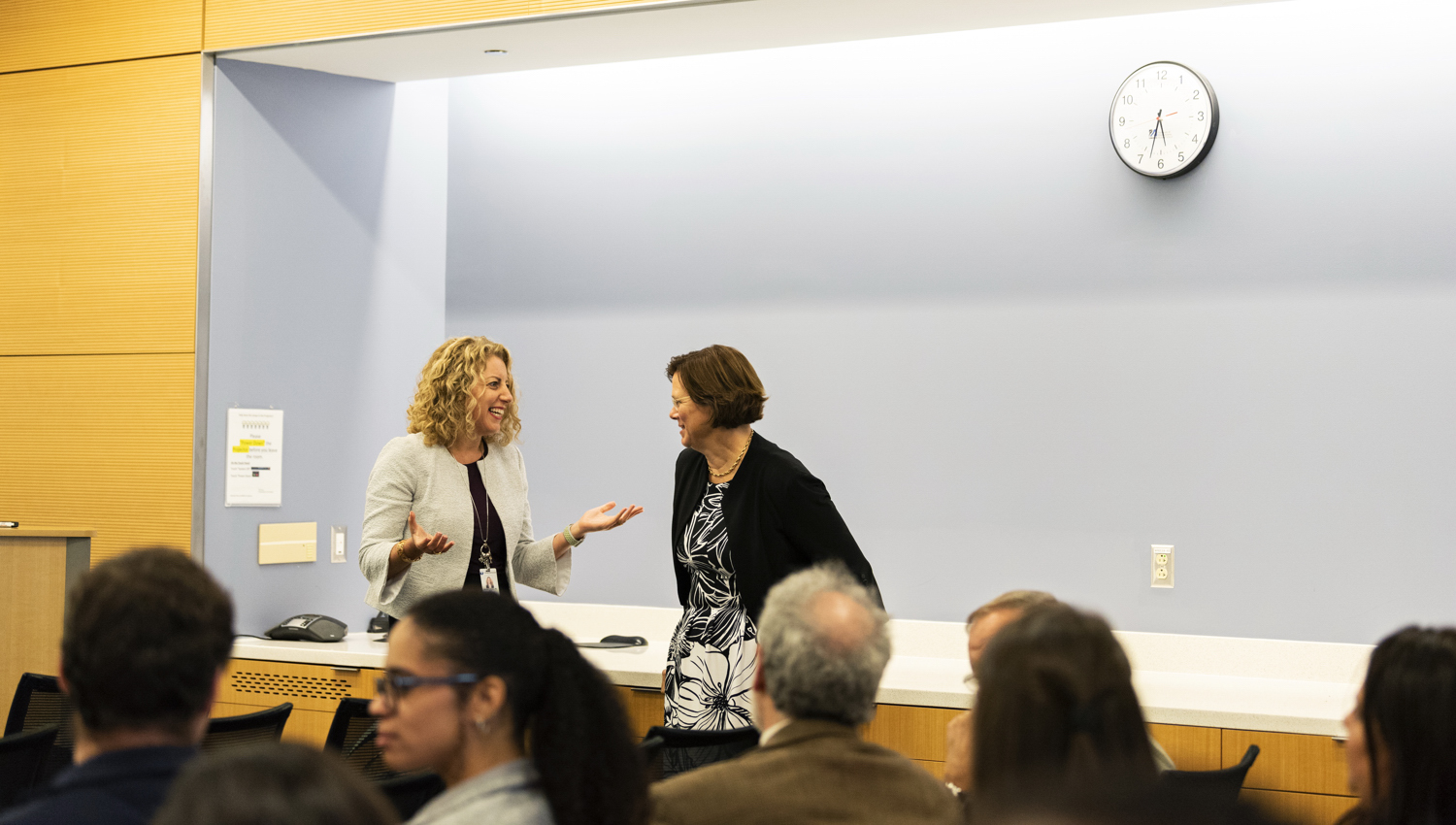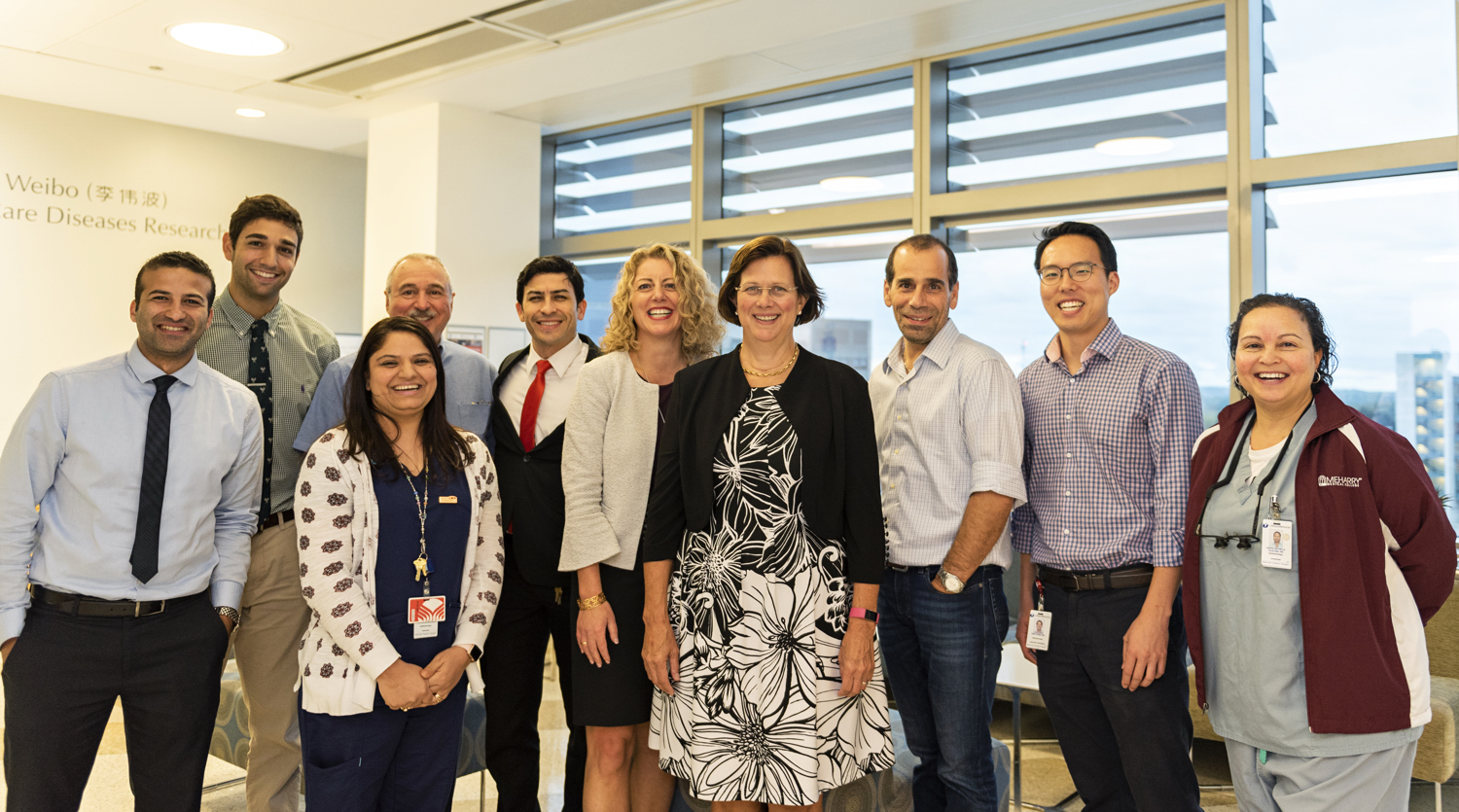Dr. Joan Miller Summarizes the Past, Present and Future of AMD Treatment
Date Posted: Thursday, September 27, 2018Joan Miller, MD, FARVO, the David Glendenning Cogan Professor of Ophthalmology and Chair of Ophthalmology at Harvard Medical School was the Vision Seminar distinguished speaker in September 2018. Dr. Miller also serves as Chief of Ophthalmology at Massachusetts Eye and Ear and Massachusetts General Hospital. In her fascinating talk, Dr. Miller summarized past, and current thoughts about the pathobiology leading to the development of age related macular degeneration (AMD).

The disease, considered the leading cause of blindness in older Americans, is triggered by fatty deposits that damage an area in the retina called the macula, which lets the eye see fine detail. Its rate of progression varies. Some patients don’t experience vision loss for many years; others lose sight in their central field of vision, inhibiting their ability to see straight ahead, but retain peripheral vision. She and her colleagues at Mass. Eye and Ear pioneered the development of photodynamic therapy (PDT) using verteporfin (Visudyne®), the first FDA approved pharmacologic therapy for AMD able to reduce and slow vision loss.

She also identified the importance of vascular endothelial growth factor (VEGF) in ocular neovascularization, forming the scientific basis of current antiangiogenic therapies for neovascular AMD. While these therapies have greatly improved the outlook for patients with AMD, Dr. Miller and her colleagues continue investigations to elucidate the molecular pathophysiology of vision loss and develop improved therapies for retinal disease.

Dr. Miller, who helped pioneer the science behind anti-VEGF therapy hopes to see a new generation of treatments emerging in the next five to 10 years. Dr. Miller discussed the potential in precision medicine, and described the hope in utilizing genetic data to develop new treatment modalities for AMD.


